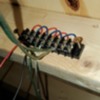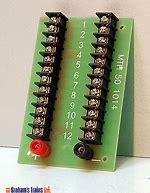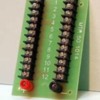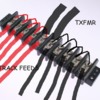I have made a new fourm post because I discovered it it something with my Lionel engines, because the problem is so much different than what I thought
https://ogrforum.ogaugerr.com/...ng-dcs-engine-signal
New post
I have about a 35 foot long layout with my TIU placed around the center of it and 2 large wires going off to each ends where there is 2 terminal blocks that go off to the tracks. I am scoring 1-4 on the Track Signal test that Ps2 and Ps3 engines have, I am pretty sure this has something to do with my wiring of the terminal blocks. I have check the individual wires and am pretty sure the problem is the long wires from the main terminal and the terminals themselves not distributing the connection properly.
Photos of the terminals are attached, they have few wires in them because i currently only have a single track down but I plan to have 3 main lines once I figure out my wiring connection problems.
Also, My Lionel engines work fine with no connection issues, and I am planning to try and get MTH terminal blocks and see if they distribute the connection properly.
I use Atlas O track.











 these ones
these ones